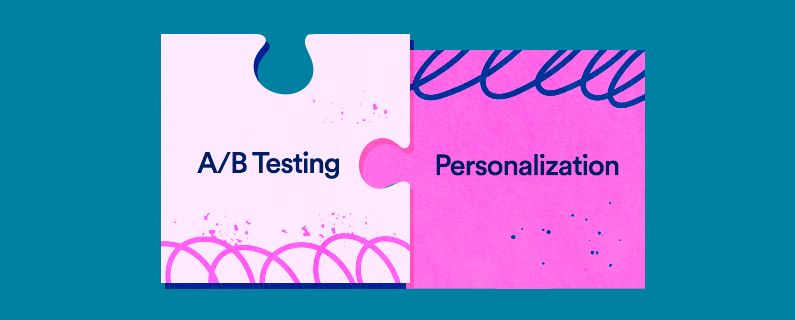Personalization tokens and merge tags are powerful tools in email marketing that allow you to tailor content specifically to individual recipients. However, optimizing their use to maximize relevance and effectiveness can be challenging. A/B testing provides a systematic approach to evaluate and enhance the impact of these elements. Here’s how you can use A/B testing to optimize your email’s use of personalization tokens and merge tags for better relevance.
Understanding Personalization Tokens and Merge Tags
Personalization tokens and merge tags are placeholders in your email content that are replaced with specific information about the recipient. This can include the recipient’s name, company, location, or other personal details. By making emails more relevant to each recipient, these tools can improve engagement and conversion rates.
Setting Up A/B Tests for Personalization Tokens
Identify Key Personalization Variables
Begin by identifying the key personalization variables you want to test. This could include different types of data points, such as the recipient’s name, purchase history, or geographic location. Determine which variables are most likely to enhance the relevance of your emails.
Create Variations
Develop different versions of your email that use various personalization tokens. For instance, test emails that incorporate the recipient’s name in different positions within the email, such as the subject line, opening sentence, or closing statement.
Monitor Engagement Metrics
Track engagement metrics such as open rates, click-through rates, and conversion rates for each variation. These metrics will help you determine which personalization tokens have the most significant impact on relevance and effectiveness.
A/B Testing for Merge Tags
Experiment with Different Merge Tags
Merge tags allow you to dynamically insert personalized information into your emails. A/B test different merge tags to see which ones resonate best with your audience. This could involve testing various data points, such as the recipient’s recent interactions or specific preferences.
Evaluate Performance
Analyze the performance of emails that use different merge tags. Look at how these variations affect metrics such as click-through rates, engagement, and overall response. This will help you understand which merge tags contribute most to improving email relevance.
Best Practices for A/B Testing Personalization Tokens and Merge Tags
Ensure Statistical Significance
To obtain reliable results, ensure that your A/B tests have a sufficiently large sample size. This helps in achieving statistical significance and making accurate conclusions about the effectiveness of different personalization strategies.
Test One Variable at a Time
When conducting A/B tests, isolate and test one variable at a time to accurately assess its impact. This approach helps in understanding the specific effect of each personalization token or merge tag on email relevance.
Monitor Long-Term Trends
While immediate results are important, also monitor long-term trends in email performance. Consistent improvements over time can indicate that certain personalization strategies are effectively enhancing relevance and engagement.
Refine Based on Insights
Use the insights gained from A/B testing to refine your personalization strategies. Implement the most effective tokens and merge tags based on the performance metrics and continue testing to further optimize your approach.
Avoiding Common Pitfalls
Avoid Over-Personalization
While personalization can enhance relevance, excessive or intrusive personalization may have the opposite effect. Ensure that your use of tokens and merge tags adds value and does not come across as invasive.
Ensure Data Accuracy
Accurate data is crucial for effective personalization. Verify that the information used in tokens and merge tags is correct and up-to-date to avoid errors that could negatively impact the recipient’s experience.
Maintain Consistency
Ensure that the personalization in your emails is consistent with the overall message and brand voice. Inconsistent or contradictory information can confuse recipients and undermine the effectiveness of your personalization efforts.
Integrating A/B Testing with Other Optimization Strategies
Combine with Behavioral Data
Integrate A/B testing results with behavioral data to gain a deeper understanding of recipient preferences and behaviors. This holistic approach helps in creating more relevant and targeted email content.
Align with Campaign Goals
Ensure that your A/B testing for personalization tokens and merge tags aligns with your overall campaign goals. This alignment helps in creating a cohesive strategy that effectively addresses your objectives.
Leverage Automation
Use automation tools to streamline the A/B testing process for personalization. Automated testing can efficiently manage different variations and track performance metrics, making it easier to optimize your email campaigns.
FAQs
What are personalization tokens and merge tags in email marketing?
Personalization tokens and merge tags are placeholders used in email content to insert personalized information about the recipient, such as their name or location. They help tailor the email content to individual recipients, enhancing relevance and engagement.
How can A/B testing improve the effectiveness of personalization tokens?
A/B testing allows you to evaluate different versions of emails using various personalization tokens. By analyzing metrics such as open rates and click-through rates, you can determine which tokens improve relevance and engagement.
What should I consider when setting up A/B tests for merge tags?
When setting up A/B tests for merge tags, ensure you test different data points, monitor performance metrics, and ensure statistical significance. This approach helps in identifying which merge tags enhance email relevance and effectiveness.
How can I avoid common pitfalls in A/B testing for personalization?
Avoid over-personalization, ensure data accuracy, and maintain consistency in your email content. These practices help prevent negative impacts on recipient experience and ensure effective use of personalization strategies.
How can I integrate A/B testing with other optimization strategies?
Combine A/B testing results with behavioral data, align testing with campaign goals, and leverage automation tools. This integration helps create a more targeted and effective email marketing strategy.
Why is it important to test one variable at a time in A/B testing?
Testing one variable at a time ensures accurate assessment of its impact on email performance. This approach helps isolate the effects of each personalization token or merge tag and provides clear insights for optimization.
















